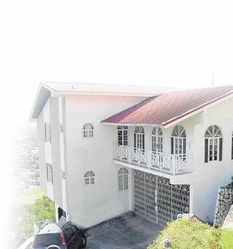Running to the hills - Phenomenon a sign of Jamaica's social divide, says university lecturer
Published: Sunday | December 6, 2009

Tyrone Reid, Staff Reporter
A LOCAL university lecturer believes 'running to the hills' for high-end housing solutions is just another means of sustaining the socio-economic chasm that divides Jamaica's haves from the have-nots.
Earl Bailey, urban planning and urban theory lecturer in the University of Technology's (UTech) Faculty of Built Environment, told The Sunday Gleaner that many Jamaicans, especially over the last few decades, have migrated to the hills in a bid to escape the influx of low-income earners into what were once middle to upper middle-class communities.
At the turn of the 20th century while investments poured into Kingston's industrial area, especially the ports, persons moved in droves from rural areas in search of available job opportunities.
"So we build the Greenwich Town area to accommodate all those persons, and there was a whole heap of shanty towns in Kingston in the 1920s, and it was the Afro-looking Jamaicans who occupied those spaces," said Bailey.
Cultural pattern
He added: "When this influx of population happened, the middle class to upper class started to move out and they went to the upper St Andrew areas of Liguanea and Mona."
The lecturer believes this rush to the hills is a lingering vestige of our colonial past. "Migration to the hills goes back to our cultural pattern of land use that was inherited from the British.
"Prior to the British concept of land use, our forefathers never used to divide lands as low, middle or high income. So we see the flat as the space for low-income dwellers.
Bailey argued that ever since slavery, Jamaicans have been trying to escape the socio-economic labels tagged on them because of how much they earn and where they live.
"But our national legal settlement strategy, if it exists, reinforces this kind of prejudice - social and economic prejudice."
He added: "Everybody in Jamaica wants to rise above that kind of labelling because when you say low income you mean low social class, automatically."
Migration uptown
As a result of the migration uptown, once-vibrant communities have died a 'socio-economic death', and have been downgraded from middle-class communities to inner-city areas. "The areas of Vineyard Town and Maxfield Avenue were high-class areas once. You can still see the old houses there and see how they were built and say yeah, mon, this use to be ... If you look at those houses and some of those up Norbrook, it's the same design," Bailey pointed out.
He explained that the arrival of low-income earners into or near these once 'uptown' communities was buoyed by the rural-to-urban migration. "The more the poor people came the more the rich folks moved out.
"And, if you look at Kingston's residential structure you will see a gradual improvement in the living conditions the further you get from the core. The closer you get to the core the more dilapidation you see," the lecturer said.
Bailey argued that the status of these communities changed because of a dearth in investment, which was needed to maintain the services people require. "People will naturally gravitate to areas where they have easier convenience of accessing services that are close to their homes."
Highlighting that Kingston's growth is constrained by the sea to the south and by the hills to the other three cardinal points, Bailey said, "Our spatial laws now say to us that only persons who are of affluence are able to build on the hills."
tyrone.reid@ gleanerjm.com









